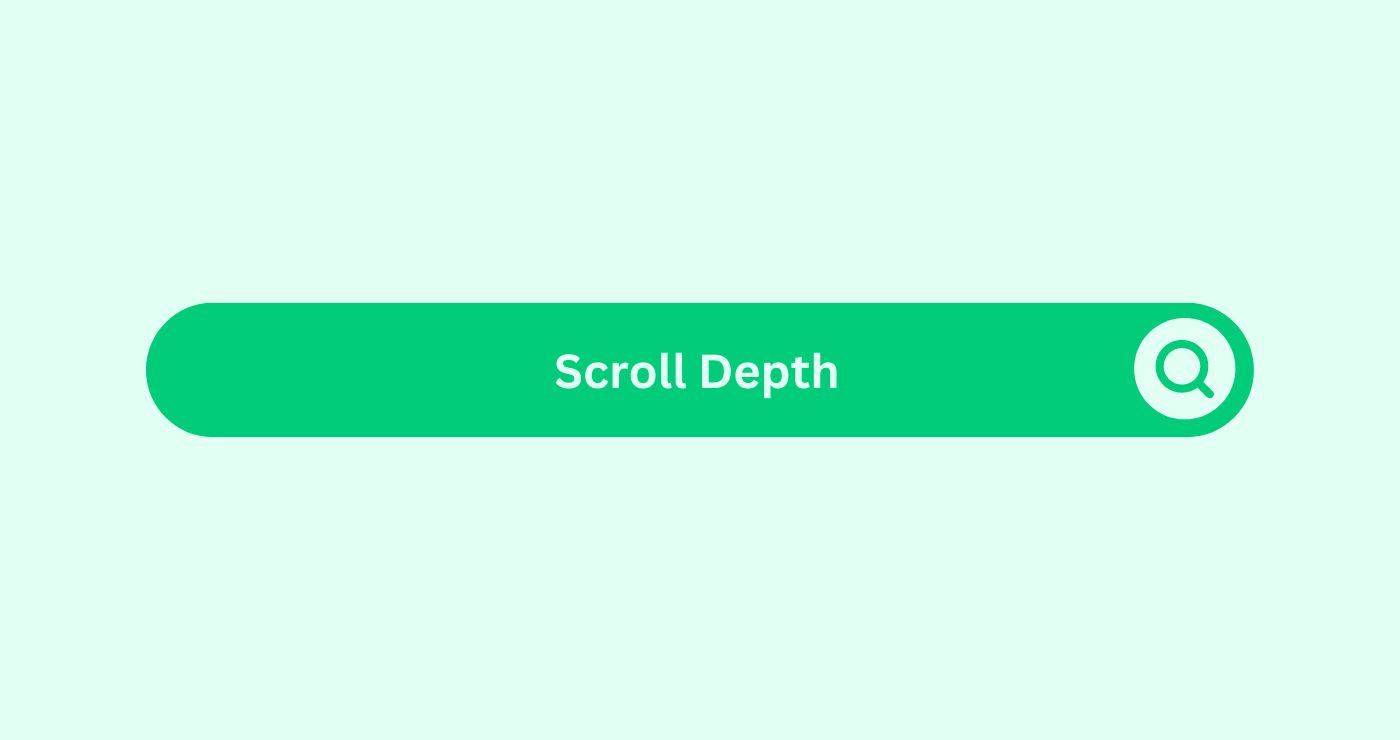Definition
Scroll depth, in the context of SEO, measures how far down a web page a user scrolls during their visit. Users typically express it as a percentage, with 100% representing scrolling all the way to the bottom of the page. This metric provides valuable insights into user behaviourDefinition What is User Behaviour in Social Media Marketing?... and content engagementDefinition Engagement in content marketing refers to the deg.... High scroll depth indicates users are finding your content interesting and delving deeper, while low scroll depth suggests they’re losing interest or the content isn’t meeting their needs. Understanding scroll depth can help you optimise your website’s content for better user engagementDefinition Engagement in content marketing refers to the deg... and, ultimately, improve your SEO performance.
How You Can Use Scroll Depth
Imagine you run a website with detailed guides on home improvement projects. Analysing scroll depth can be incredibly insightful. If users are only scrolling halfway down your project guides, it might indicate the information is overwhelming or lacks clear visuals. By analysing scroll depth alongside other metricsWhat are Metrics in the context of SEO? Metrics in SEO refer... like time on pageDefinition In the realm of SEO, time on page refers to the a... and bounce rateDefinition Bounce Rate in social media marketing refers to t..., you can identify areas for improvement. Perhaps splitting lengthy guides into smaller sections, adding compelling visuals, or incorporating internal links to related content can encourage users to scroll deeper and engage more with your content.
5 Key Takeaways
- High scroll depth indicates user engagementDefinition Engagement in content marketing refers to the deg.... Users actively reading and consuming your content are typically scrolling deeper down the page.
- Low scroll depth suggests areas for improvement. Content that users quickly abandon might be poorly structured, lack visuals, or not address user intent effectively
- Scroll depth should be considered alongside other metricsWhat are Metrics in the context of SEO? Metrics in SEO refer.... Bounce rateDefinition Bounce Rate in social media marketing refers to t... and time on pageDefinition In the realm of SEO, time on page refers to the a... provide additional context for understanding user behavior.
- Optimize content and user experience to encourage deeper scrolling. Break down lengthy content, incorporate visuals, and use internal linkingWhat is Internal linking? Internal linking refers to the pra... to create a more engaging experience.
- Track scroll depth over time to monitor the effectiveness of changes. Analyze how adjustments to your content impact user engagementDefinition Engagement in content marketing refers to the deg....
FAQs
1. What is a good scroll depth?
There's no one-size-fits-all answer. It depends on your content type. Aim for a scroll depth that reflects the typical depth of engagementDefinition Engagement in content marketing refers to the deg... for your content. Aim for users to scroll through a significant portion of your content, but be realistic based on content length and user intent.
How can I track scroll depth?
Most website analyticsDefinition In SEO, analytics involves collecting, measuring,... platforms like Google AnalyticsDefinition In SEO, analytics involves collecting, measuring,... offer scroll depth tracking capabilities. You can also find various SEO pluginsDefinition SEO plugins enhance CMS or web browsers with feat... and tools that provide scroll depth data.
Does scroll depth directly impact SEO ranking?
Scroll depth isn't a direct ranking factor, but it is an indicator of user experience, which Google prioritizes. High scroll depth can suggest users are finding your content valuable, potentially leading to better rankings.
How is scroll depth different from bounce rate?
Bounce rateDefinition Bounce Rate in social media marketing refers to t... measures the percentage of visitors who leave a website after viewing only one page. Scroll depth goes beyond initial page views, indicating how much content users engage with on a single page.
Can scroll depth be misleading?
Yes. If your website has a lot of shallow content with minimal depth, high scroll depth might be misleading. Focus on creating informative and engaging content that encourages users to delve deeper.
What other metrics can I consider alongside scroll depth?
Time on pageDefinition In the realm of SEO, time on page refers to the a..., bounce rateDefinition Bounce Rate in social media marketing refers to t..., and conversion rateDefinition Conversion Rate in the SEO space refers to the pe... offer additional insights into user behavior and content effectiveness.
How can I improve content based on scroll depth data?
Analyze which sections of your content have high and low scroll depth. Focus on improving low-performing sections with better formatting, visuals, or addressing user intent more effectively.
Should I track scroll depth for different content types?
Absolutely! Scroll depth expectations will vary for short blog posts compared to in-depth guides. Track scroll depth for different content types to identify areas for improvement.
How often should I track scroll depth?
Monitor scroll depth regularly to identify trends and track the effectiveness of content optimization efforts. Consider weekly or bi-weekly monitoring.
Can scroll depth data be used for A/B testing?
Yes! Use scroll depth data to identify areas for improvement and then A/B test different content variations to see which versions encourage users to scroll deeper and engage more with your content.




